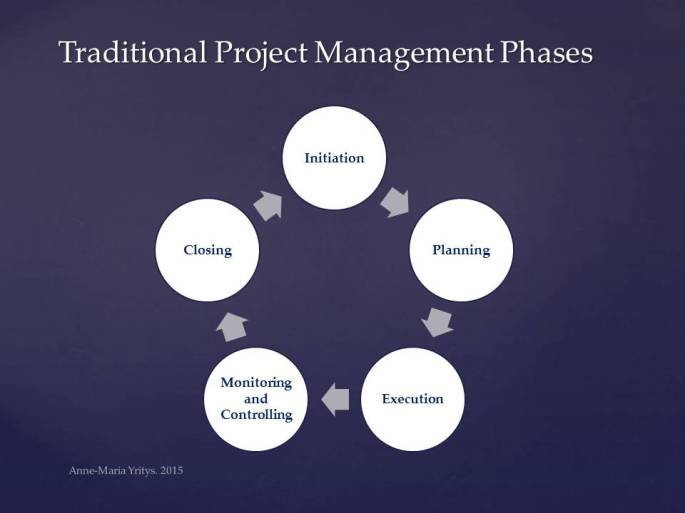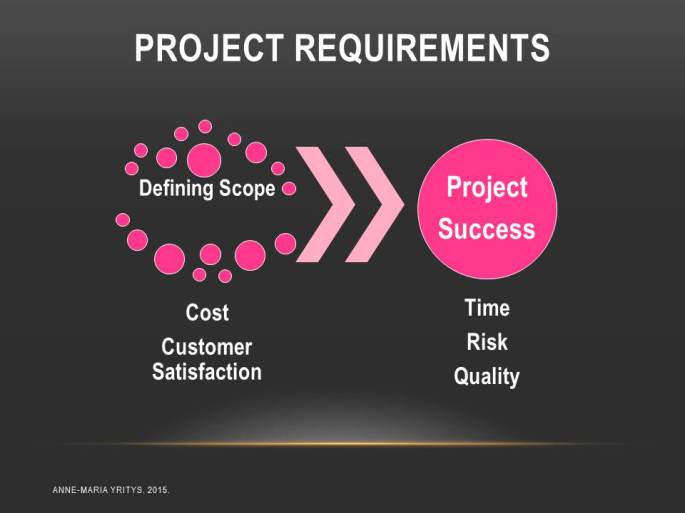
The P in PM is as much about People Management as it is about Project Management (Cornelius Fichtner)
Are you a project manager whose projects have failed more often than succeeded? Well, congratulate yourself for still having the title project manager, because if you had participated in The American Apprentice, Mr. Trump would already have fired you. No hard feelings though – it is nothing personal, it is only business, citing Mr. Trump.
And, to comfort you: you are most probably not alone with the problem, since most projects actually do fail, due to a number of reasons at the core of which are poor requirements, a poor scope definition (poor planning) from the beginning AND communication problems.
A project, according to the Project Management Institute, is a temporary endeavor undertaken to create a unique product, service, or result. Furthermore, a project usually has a definite beginning and an end. The target has been met once the project´s objectives have been met, or when the need for the project ceases to exist. Projects can last for years, even decades, depending upon their social, economic, and environmental impacts. In other words, a project can vary from a set of regular (daily, weekly) tasks with the purpose to reach a certain goal to more serious projects which indeed can last for years or even for decades.
As applicable to business (and development projects), successful project management requires skillful application of a wide range of knowledge, tools and techniques in order to meet the requirements. Traditional project management distinguishes five process groups as the illustration below simply demonstrates:
Depending upon the nature and the complexity of the project, various project management techniques can be utilized. Traditional project management, very structured, requires being well-organized, and as a supportive guide I can warmly recommend the American Project Management Institute´s “A Guide to the Project Management Body of Knowledge (PMBOK® Guide)”, a comprehensive book including all technical details required for managing a project, from product life cycle management to project communications management. It even includes a chapter about how to handle interpersonal communication.
Although project management, as anything else in (business) life, cannot be learned solely from books, the PMBOK serves as an excellent guide to almost any project. Of course, the guide can be accustomed to the nature, length, and complexity of the project. Here, as with anything else, common sense is applicable.
Furthermore, managing a project requires for the project manager, and the project team to:
– Identify requirements – without requirements, the project would not be needed in the first place
– Addressing needs, concerns, and expectations of the stakeholders
– Balancing the competing project constraints including at least the following requisites:
As said, projects vary significantly from type, purpose, length, and complexity. An example of a long-term, complex, global, societal, and economical project are the United Nations Millennium Development Goals. The goals were set (the project was initiated) in 2000, with a deadline in 2015. So far, only three of the eight goals have been met, although significant progress has been made in each of the goals. Analysis regarding the reasons for failure is certainly possible, and assumption is that analysis is being made upon these within the UN organization. Despite of failing to reach all the goals within the project timeline, the UN in co-operation with different instances is already planning new goals, and continues its important work towards improvement of socioeconomic circumstances in geographical regions most affected e.g. by poverty.
Another type of project management is Agile PM.
Logic will get you from A to B. Imagination will take you everywhere. (Albert Einstein)
Whereas traditional management theory (and traditional project management) assumes that
– Regulating change requires rigid procedures
– Hierarchical organizational structures establish order
– Increased control results in increased order (organizations must be rigid and static)
– Employees are interchangeable particles of the organizational machine (rat race?)
– Problems are mainly solved through reductionist task breakdown and allocation
– Projects and risks can be managed only through complex up-front planning
Agile project management professionals, on the other hand, look for emerging management principles based upon “new science” of complexity exploiting an understanding of autonomous human behavior gained through studying living systems in nature. Complex adaptive systems (CAS), and complexity scientists have studied the collective behavior of living systems in nature: flocking of birds, schooling of fish, marching of ants and the swarming of bees, discovering that while the individual “agents” in these complex adaptive systems possess only local strategic rules and capacity, their collective behavior is characterized by an overlaying order, self-organization, and a collective intelligence that is greater than the sum of the parts.
CAS has been applied successfully in several areas, including economics, and management. In CAS, the (project) manager becomes an adaptive leader, encouraging constant feedback and collaboration. CAS in Agile PM enhances the ability to deal with change, views organizations as elastic, fluid systems composed of intelligent human capital, and an overall humanistic problem solving approach. Every project needs a leader, and in Agile Methodologies the PM is rather a leader than a taskmaster with qualities such as vision, communication skills, and soft management skills, in addition to technical and organizational skills. (Agile Project Management. http://www.ccpace.com; Highsmith, J. 2004. Agile Project Management).
Agile Project Management, as Traditional Project Management, can be used in any kind of setting. Both methodologies can also be combined, utilizing the best parts of each in order to create the best possible result(s).
In summary, the most common reasons for project failure are:
– Poor planning in the first place, and poor requirements definition
– Unrealistic goal(s) from the beginning (dreaming, having goals and optimism is wonderful, but goals also need to be realistic) => Poor Scope Definition
– Miscalculations regarding time and budget
– Too many projects at once (project manager and team members are overloaded with work)
– Poor leadership (and thus poor project execution, e.g. teams are not integrated well enough)
– Poor communication
– Technological problems (although, depending upon the project – may be of most relevance in IT and technology projects)
– Poor risk calculation, and management
How to avoid project failure:
SELECT A QUALIFIED PROJECT MANAGER, WHO KNOWS HOW TO SET UP A PROJECT TEAM AND HOW TO LEAD PEOPLE. (REMEMBER: TASKS ARE BEING MANAGED, PEOPLE ARE BEING LEAD).
SET REALISTIC GOALS. IT IS NICE TO DREAM BIG, BUT TO AVOID FAILURE, REALISM IS NECESSARY.
PLAN THE PROJECT THOROUGHLY, INCLUDING THE DEFINITION OF REQUIREMENTS, ORGANIZATION AND RISK MANAGEMENT OF THE PROJECT.
SET A REALISTIC TIME FRAME AND DEFINE AN APPROPRIATE BUDGET WITH A +/- CALCULATION.
MAKE SURE NOT TO OVERLOAD EMPLOYEES WHO ALREADY ARE INVOLVED IN (MANY) OTHER PROJECTS. MAKE SURE THAT PROJECT MEMBERS HAVE ENOUGH TIME, ENERGY AND ENTHUSIASM FOR THE REALIZATION OF THE PROJECT.
FOCUS ON LEADERSHIP RATHER THAN ON MICRO-MANAGEMENT, ESPECIALLY WHEN IT COMES TO LONG-TERM PROJECTS.
LEARN HOW TO COMMUNICATE EFFICIENTLY. COMMUNICATION SKILLS CAN ALWAYS BE DEVELOPED, HOWEVER GREAT A COMMUNICATOR YOU BELIEVE YOURSELF TO BE.
FORMULATE A RISK MANAGEMENT PLAN FOR YOUR PROJECT, INCLUDING POSSIBLE RISKS AND THEIR MINIMIZATION + WHAT ACTIONS NEED TO BE TAKEN IN CASE OF EMERGENCY.
AUDIT THE PROJECT ON A REGULAR BASIS WITH THE HELP OF PROFESSIONAL, UNBIASED AUDITORS.
Chaos in the world brings uneasiness, but also allows the opportunity for creativity and growth (Tom Barrett)
Reasons for Project Failure (IAG Consulting):
~~~~~~~~~~~~~~~~~~~~~~~~~~~~~~~~~~~~~~~~~~~
Thank you for reading, reflecting, commenting, and for sharing your experiences about successful/unsuccessful project management.



You must be logged in to post a comment.